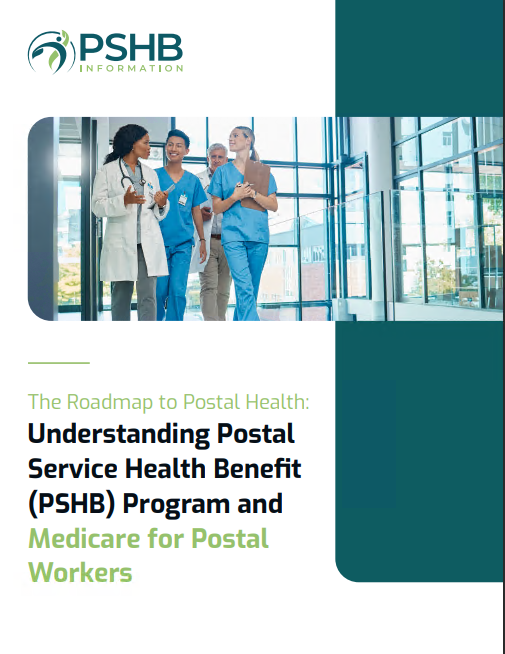Key Takeaways:
-
Coordinating your PSHB plan with Medicare Part D can help you manage out-of-pocket prescription drug costs effectively.
-
Understanding the timelines, phases, and integration benefits can prevent overpaying while maximizing your coverage.
Why Coordination Matters Between PSHB and Medicare Part D
As a Postal Service employee or retiree enrolled in the Postal Service Health Benefits (PSHB) program, you’re already benefiting from a robust health plan. However, when you become eligible for Medicare, particularly Part D prescription drug coverage, things can get complicated. If you’re not careful, you might find yourself paying for redundant coverage or missing out on opportunities to reduce costs. Knowing how these programs work together is essential to avoid overpaying and ensure your medications are covered efficiently.
Medicare Part D Basics You Should Know
Medicare Part D is a federally administered program providing prescription drug coverage to Medicare enrollees. Since January 2025, it’s undergone significant updates:
-
$2,000 Out-of-Pocket Cap: Once you’ve spent $2,000 on covered prescriptions, your plan pays 100% of drug costs for the rest of the year.
-
Three Phases of Coverage: The deductible phase, initial coverage phase, and catastrophic coverage phase have replaced the old “donut hole” structure.
-
Employer Group Waiver Plan (EGWP): If you’re Medicare-eligible and enrolled in a PSHB plan, your drug coverage is coordinated through an EGWP.
Understanding these details lays the groundwork for integrating your PSHB plan with Medicare effectively.
How PSHB and Medicare Part D Work Together
If you’re Medicare-eligible, PSHB plans automatically include prescription drug coverage via an EGWP. This integration has several benefits:
-
Streamlined Costs: Your out-of-pocket expenses are often reduced when Medicare Part D is coordinated with your PSHB plan. For example, deductibles or copayments may be waived or minimized.
-
Automatic Enrollment in EGWP: When you enroll in a Medicare-eligible PSHB plan, you’re automatically enrolled in an EGWP, ensuring seamless coverage.
-
No Duplication of Benefits: EGWP eliminates the need to purchase a separate Medicare Part D plan, avoiding redundant premiums and confusion.
If you’re approaching Medicare eligibility or already enrolled, taking the time to understand this integration is critical to making the most of your coverage.
Timelines to Keep in Mind
Coordinating your PSHB and Medicare Part D coverage requires careful attention to key dates and enrollment periods. Missing these timelines can lead to late enrollment penalties or coverage gaps:
-
Initial Enrollment Period (IEP): This 7-month window surrounds your 65th birthday (three months before, the month of, and three months after). You must enroll in Medicare during this time unless you’re still actively working.
-
Annual Enrollment Period (AEP): From October 15 to December 7, you can make changes to your Medicare Part D coverage.
-
PSHB Open Season: Aligns with Medicare’s AEP, typically running from mid-November to mid-December. This is your opportunity to review your PSHB plan options and ensure they integrate well with Medicare Part D.
Staying on top of these dates ensures your coverage remains uninterrupted.
Avoiding Overpayment: Practical Steps
Step 1: Review Your Current PSHB Plan
Start by reviewing your current PSHB plan to understand its prescription drug benefits and how they coordinate with Medicare Part D. Pay close attention to:
-
Deductibles
-
Copayments
-
Coinsurance
-
Out-of-pocket maximums
Step 2: Assess Your Prescription Needs
Make a list of the medications you take regularly and their associated costs. Use this information to determine whether your PSHB plan adequately covers your prescriptions or if additional Medicare Part D coverage is necessary.
Step 3: Understand EGWP Benefits
As part of your PSHB plan, EGWP simplifies the coordination process by automatically enrolling you in a Medicare Part D plan. This eliminates the need for separate Medicare Part D enrollment and ensures:
-
Coverage for most prescription drugs
-
Reduced out-of-pocket costs
-
Simplified claims processing
Step 4: Evaluate Costs
Compare your total costs, including premiums, deductibles, and out-of-pocket expenses. Focus on how these costs align with the $2,000 out-of-pocket cap introduced for Medicare Part D in 2025.
Step 5: Update Your Plan During Open Season
Take advantage of the PSHB Open Season to ensure your coverage aligns with your prescription needs. Consider switching to a plan that better integrates with Medicare if necessary.
Benefits of Medicare Integration with PSHB
Combining Medicare Part D with your PSHB plan offers several advantages:
-
Cost Savings: You’ll benefit from reduced out-of-pocket costs for prescriptions due to the $2,000 cap and waived deductibles for many PSHB plans.
-
Comprehensive Coverage: Medicare Part D ensures you have access to a wide range of medications, while PSHB covers additional healthcare needs.
-
Convenience: Automatic EGWP enrollment streamlines the process, so you don’t have to manage multiple plans or policies.
Key Challenges to Watch For
While the coordination of PSHB and Medicare Part D has numerous benefits, there are some potential challenges you should prepare for:
-
Out-of-Network Prescriptions: Some medications may not be covered or may have higher costs if purchased out of network.
-
Plan Changes: Medicare and PSHB plans adjust their coverage annually. Always review your Annual Notice of Change (ANOC) to stay informed about premium, deductible, and coverage updates.
-
Enrollment Penalties: Failing to enroll in Medicare Part D when eligible can result in lifetime penalties. Make sure to enroll during your IEP to avoid unnecessary costs.
Maximizing Your Prescription Drug Coverage
To get the most out of your PSHB and Medicare Part D coverage, follow these tips:
-
Utilize Preferred Pharmacies: Many plans offer reduced copayments when you use their network of preferred pharmacies.
-
Choose Generic Drugs: Opting for generics instead of brand-name medications can significantly lower your costs.
-
Monitor Your Spending: Track your out-of-pocket expenses throughout the year to determine when you’ll reach the $2,000 cap.
-
Stay Updated: Review your PSHB plan’s prescription drug coverage annually to ensure it meets your needs and integrates seamlessly with Medicare Part D.
FAQs About PSHB and Medicare Part D Coordination
Q: Do I need to enroll in a separate Medicare Part D plan if I have a PSHB plan? A: No. PSHB plans for Medicare-eligible enrollees include prescription drug coverage through EGWP, eliminating the need for a separate Medicare Part D plan.
Q: Can I switch PSHB plans to better align with my Medicare needs? A: Yes, during the PSHB Open Season, you can switch to a plan that integrates better with Medicare Part D.
Q: What happens if I exceed the $2,000 out-of-pocket cap under Medicare Part D? A: After reaching the cap, your Medicare Part D plan will cover 100% of your prescription drug costs for the rest of the year.
Q: What if my prescriptions are not covered by Medicare Part D? A: Check your PSHB plan’s formulary to see if it covers the medications Medicare Part D does not.
How to Stay Ahead with Your Coverage
Being proactive is the key to successfully managing your prescription drug coverage. Take the time to review your options, coordinate your PSHB and Medicare Part D plans, and keep track of important enrollment dates. With careful planning, you can avoid overpaying while ensuring you have the coverage you need.









